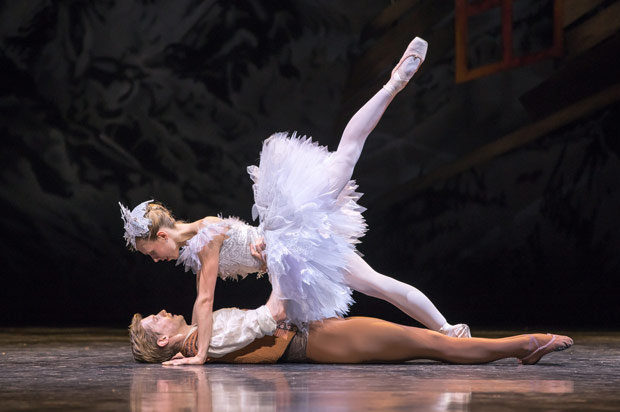
© Andy Ross. (Click image for larger version)
Scottish Ballet
Stravinsky: The Fairy’s Kiss, The Rite of Spring
★★★★✰
Glasgow, Theatre Royal
6 October 2017
scottishballet.co.uk
It’s the 25th anniversary of Kenneth MacMillan’s untimely death and a time when we celebrate all that he gave to the art. In truth, most years he is never far away from balletgoers’ thoughts as they so often rave about his full-evening narrative works. Everybody, it seems, toasts him regularly.
All five of the major UK ballet companies are dancing MacMillan this autumn and it culminates this month with them all appearing on London’s Royal Opera House stage in various combinations (full details). The celebrations are concentrating on MacMillan’s generally well-known single-act works, with one interesting exception, courtesy of Scottish Ballet. They alone choose to widen the active repertoire by reviving MacMillan’s first classical ballet – The Fairy’s Kiss (otherwise known as Le Baiser de la fée), originally created in 1960.
Reviving any piece out of the repertoire for decades is not easy or straightforward and it’s worth reading Jann Parry’s feature article about Fairy’s Kiss and all the work and people involved in putting it on again. And the result, fusing as it does sensitive new designs with original steps, is absolutely fascinating.
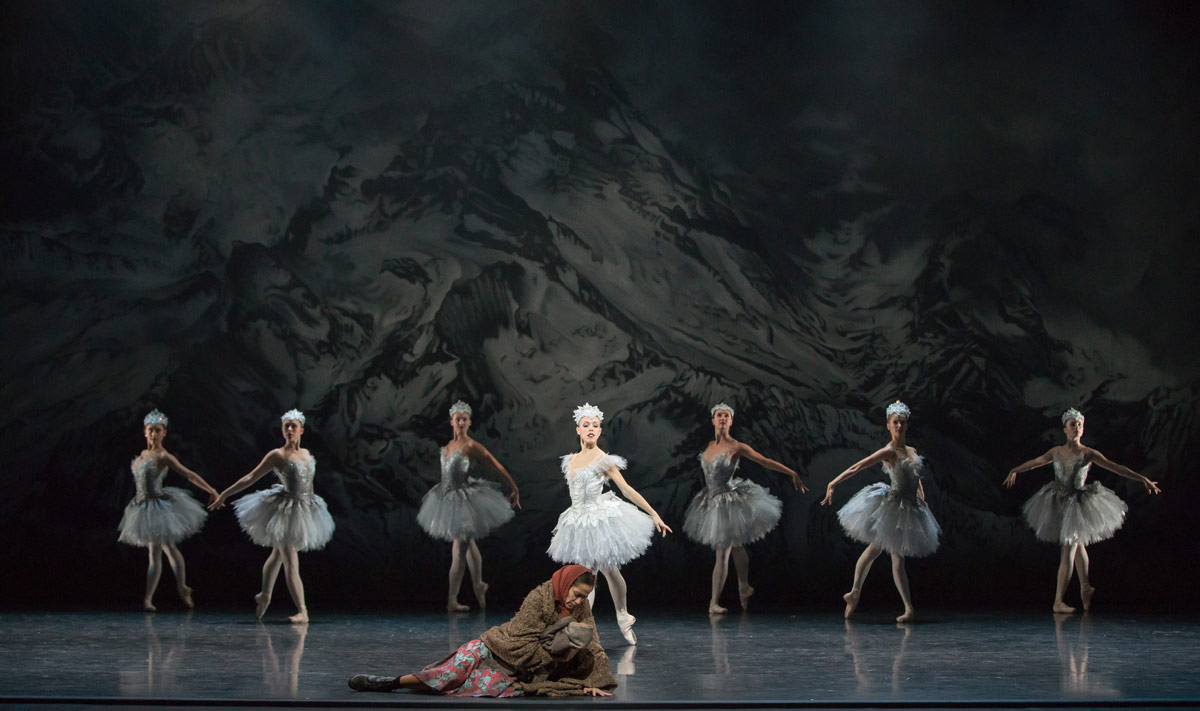
© Andy Ross. (Click image for larger version)
And, surprise, surprise, the wonderful thing is just how much MacMillan there is in it – by that I mean that the movement we often see in his later ballets can be seen here in embryo. My brain was constantly racing around as snatches of movement you are used to seeing in another context flashed by. And you start to interrogate your memory on where the movement is better known or developed (Manon, Romeo and Juliet, Mayerling perhaps…) and, damn it, some other movement resonance then pops out. You can’t keep up and the bunhead in you so wants to freeze-frame and replay at times. For fans it’s a treasure trove of interest and will repay repeat viewing. While the movement has many echoes, so does Stravinsky’s score – in homage to Tchaikovsky, you feel you are part of a much bigger traditional work and it’s obvious why so many choreographers are attracted to the score. Gary Harris’s costumes are also those of a bigger piece and look stunning – of today and yet also of MacMillan’s time and suggestive of a set. I think they support the movement far better than trying to recreate the 50’s designs.
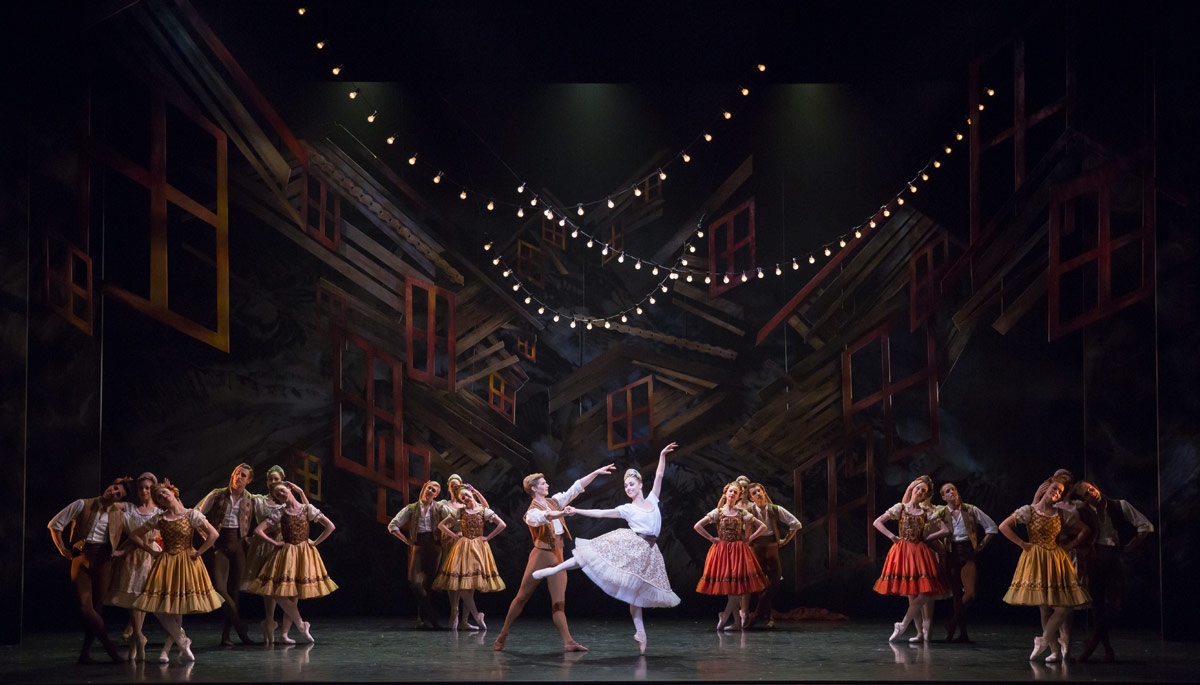
© Andy Ross. (Click image for larger version)
The Fairy’s Kiss plot is based on a Hans Christian Andersen’s story in which a young man is saved as a child by a Fairy’s kiss and then, on the eve of his wedding, is reclaimed by the devious fairy and taken to the Land Beyond Time and Place. It’s actually a much more dense plot over 4 scenes including a village Fete and a Mill. There is a lot to get over in 50 minutes and Stravinsky’s scenario is highly prescriptive and was not open to change. And, as Jann Parry’s article makes clear, MacMillan realised change would elevate the piece, but he could not get agreement for it. That’s a shame because it’s a ballet that doesn’t instantly convey its plot, and that seems so un-MacMillan. You do need to read the programme. Regardless of that, the music and the steps are joys in their own right – yes this is classical work with great things for the corps, but one of MacMillan’s emotionally charged pas de deux is never far away. It might be a fanciful story, but these are real characters on stage and they touch us. The first night cast, of Constance Devernay as the Fairy, Andrew Peasgood as the Young Man and Bethany Kingsly-Garner as the Fiancée, were particularly impressive dramatically and gave a lucid account of often difficult movement.

© Andy Ross. (Click image for larger version)
All up, Scottish should feel very proud of celebrating MacMillan in such a thoughtful, and thought provoking, way and I hope it’s recorded for sale and posterity.
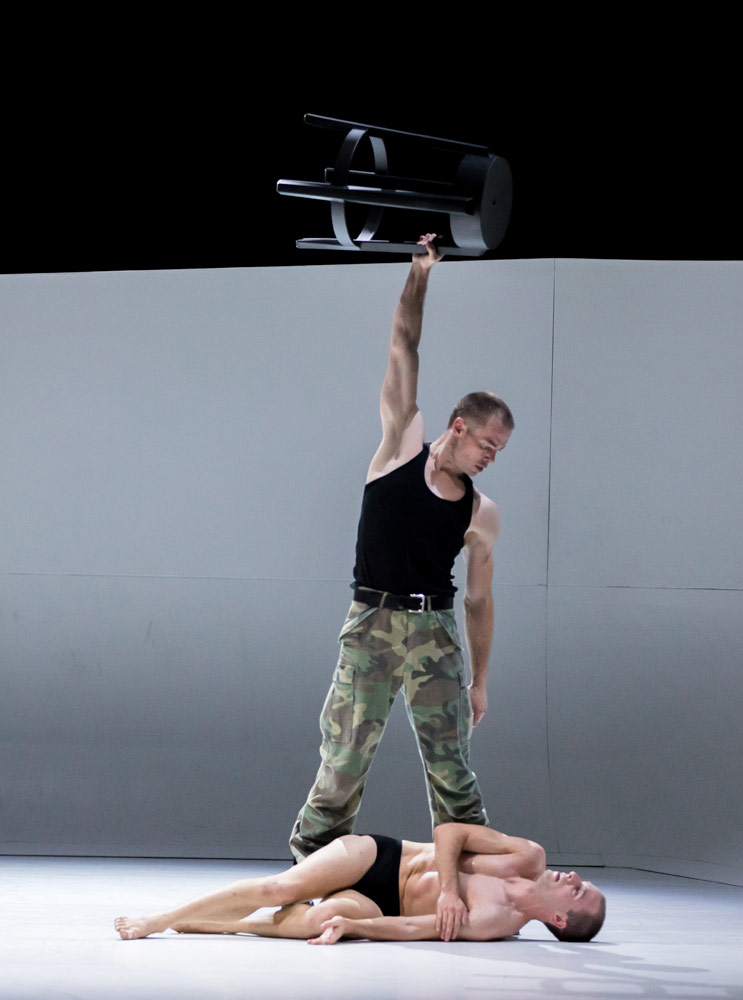
© Andy Ross. (Click image for larger version)
The double bill was actually fused together by the composer Stravinsky. In Fairy’s Kiss he is channelling Tchaikovsky, but in The Rite of Spring he lets rip with a vengeance on his own account and for ancient Russia. It’s another piece of music that choreographers are drawn to. Christopher Hampson’s take is different to many – out go all the tribal shenanigans and in comes a story of 2 brothers, one turning to religion and the other the army, eventually tasked with interrogating the younger brother. Fluttering through is an angel of life and death who tantalisingly appears to the religious brother, and supports him in his hour of need. The dancing for the brothers (grittily portrayed by Christopher Harrison and Constant Vigier) is brutal and totally committed. But it’s Sophie Martin’s prowling angel that woos us all. There is no escape for the dancers or us in an all-enveloping white set.

© Andy Ross. (Click image for larger version)
The end of Rite of Spring, which I won’t give, comes as just as much of a shock as any (traditional) sacrifice. My goodness, it’s a piece that makes you think about the rights and wrongs of religious belief and the crude crusading against its excesses.
A diverse and very grown-up bill coupling stunning music to vivid choreography and committed dancing.














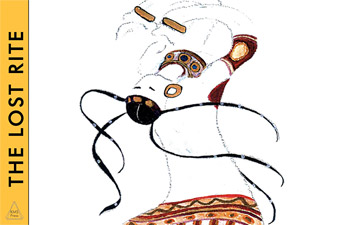

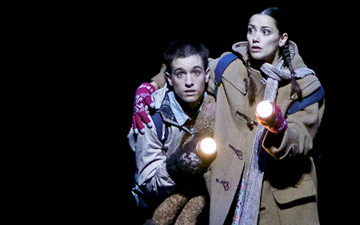
You must be logged in to post a comment.